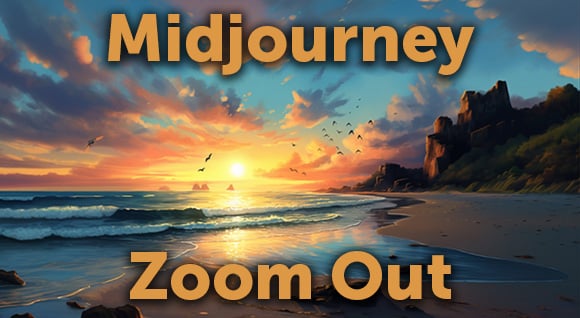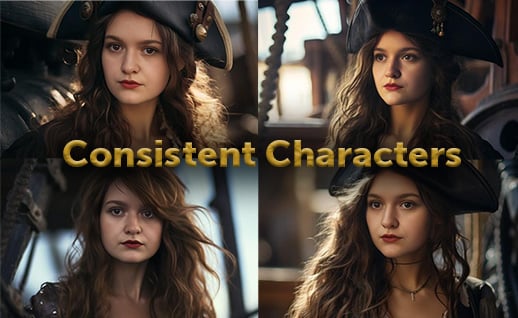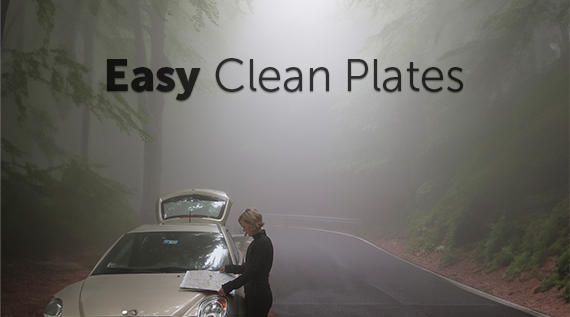Here at Dissolve, we like to entertain ourselves — and you — by putting together videos that not only show off our clips (and occasionally our photos), but tell stories.
If you’re a typical creator of videos, commercials, or branded content, working for a production company or ad agency, you use stock footage to fill in the gaps. You add stock footage in post, in place of shots you couldn’t afford to shoot or that didn’t turn out well, or as finishing touches — to flesh out pacing, reinforce a sense of place with an establishing shot, or add a particular emotional or visual vibe.
Our constraint at Dissolve is unique: our videos have to be made entirely with stock footage. Yes, it can be done, but, after a few years of doing this, I came up with a fitting metaphor:
Trying to tell a story with nothing but stock footage is like trying to make a meal out of nothing but condiments.
It’s possible … but you have to be very creative, and dig deep into the lesser-traveled aisles of the stock-footage grocery store. And it often helps to start by taking an inventory of your ingredients, rather than deciding upon a recipe and then going shopping.
So, what do you do when you’re faced with crafting a compelling story out of “random stuff,” be it stock footage, your clients’ footage and photo assets, or a combination of both?
Montage, baby.
Montage to the rescue
If you don’t have key footage (original footage, shot to your brief or script), actors speaking dialogue, or a talking head to guide you through your movie — you’re making a montage. You’re telling a story from whatever you can find, license, or create in post-production.
Understanding the art of montage can help you craft compelling stories out of “random stuff,” be it stock footage, your clients’ footage and photo assets, or a combination of both
Side note: montages have appeared in Hollywood films and television shows for decades, but they aren’t the “condiments aisle” style of montage — they’re built from scenes custom-shot to tell a predetermined story over a short time. Like this one from Team America: World Police.
This video is a good example of the power of song to hold a montage together. In the absence of narrative, you just watch and listen, and it all comes together.
The use of lyrics is just one way to make a montage work. In this series, I’ll explore other ways you can turn a variety of clips into a compelling story.
Montage magic, method 1: Someone else’s script
Let’s begin with Dissolve’s most successful showreel to date, This Is a Generic Brand Video. In this case, the script came first — Kendra Eash’s brilliant piece for McSweeney’s was written with stock footage in mind. Her parody poked fun at those vacuous brand videos we’ve all seen:
We think first
Of vague words that are synonyms for progress
And pair them with footage of a high-speed train.
The takeaway? Maybe you don’t need to write the script yourself. Particularly if you’re spinning a “branded content” kind of story, rather than pitching your product directly. Admittedly, it’s unlikely you’ll find a script as clever and relevant to your business as Kendra’s was to ours. But it’s well worth spending a few hours to search. There’s a good chance you’ll find an essay, short story, lyric poem, or humor piece that you can adapt to your own uses.
Maybe you don’t need to write the script yourself
In our experience, the people we’ve contacted (yes, you should always ask permission) are usually excited to see their words turned into videos — Maria Popova was more than happy to let us make a video from her essay 7 Things I Learned in 7 Years of Reading, Writing, and Living.
You can even find video storytelling opportunities on Twitter. We created the Advertising Insider! series based on the parody account @adweak.
Once you have the script nailed down, take the time to find the right voiceover. It can make or break your video. In the Generic Brand Video, our Sam Elliott soundalike nailed the performance, and added another dimension of cultural relevance and parody — the Hollywood actor selling out to corporate America. (Not that there’s anything wrong with that.) We found that guy on Fiverr, but we’ve found fantastic talents on Voices.com too.
Don’t underestimate the power of a killer voiceover
Consider how the written script and spoken words will meld. Might they meld perfectly, or contrast in surprising ways? (“Precocious kids reading grown-up scripts” used to be surprising, but it’s way overdone.) Explore how phrasing, rhythms, and rhyme might affect your script. Consider unexpected accents: Why is the Geico lizard British? To get your attention!
To find out more about creating a compelling story with video, check out the whole Making Montage Magic series, Hourglass Storytelling, How to Plan Your Movie Using Storyboarding, and An Introduction to Pacing and Rhythm. Or get your hands dirty with our Skillshare class, Creative Storytelling with Stock Video.
Posted by
Jon Parker

.png)
.png)
.png)




